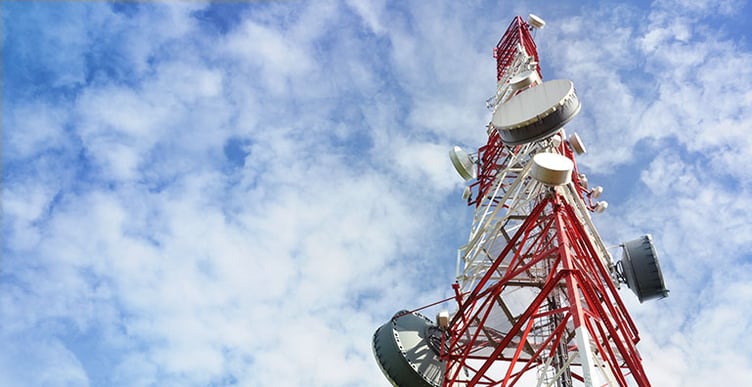
When you have valuable equipment, inventory or facilities to protect, remote monitoring systems are the best way to keep an eye on threats to your assets. They help prevent damage from environmental conditions like extreme temperatures and moisture. Even if there is no internet connection or phone line, you don't have to leave your property unprotected. You need an environmental monitoring system that uses cellular connectivity.
But spotty cellular coverage for monitoring systems can be almost as bad as no coverage at all. Murphy’s Law dictates that the problem will occur where or when the coverage is poor. With improper coverage, the system will not be able to connect to the cellular network. This means you won't receive your sensor data or alarms.
Losing cellular reception
There are several things that can impact cellular reception. User load on the network and tower placement are the usual culprits. A carrier's coverage is a network of cell sites, each with a tower and base station controller with a range of about ten square miles. Ideally, cells provide reception up to the edge of the next cell site. When there is little or no overlap between cell sites, you can lose reception. Also, the farther you move away from a tower, the more likely signal strength will fade.
Do your homework
Here are a couple of websites that can help you decide which cellular carrier will provide the best coverage for remote monitoring systems in your area:
cellmapper.net
CellMapper is a powerful tool for locating 2G, 3G, 4G, and 5G base stations. It collects signal strength and network data from users' devices to map base station locations and coverage areas. Collected data is sent to CellMapper’s servers, where it's processed and visualized on a Google Maps-based interface—accessible via the app or the website. For best accuracy, measurements should be taken in open areas, ideally with minimal obstructions. In urban settings, partial obstruction is expected. Users are encouraged to move in half to three-quarter circles around suspected tower locations to improve data accuracy. Data can be uploaded in real time or manually after collection.
opensignal.com
Open Signal lets you select a city and the cellular provider by clicking on “Coverage Maps” from the site’s navigation bar. The result returns a colored map that can help users choose the best cellular coverage. Open Signal suggests trying both AT&T and Verizon networks to see which is better for your location. Also note that there is an option for viewing 2G/3G coverage or 4G coverage. You’ll want to make sure only the 4G button is selected, and then zoom in to see your area.
Strengthen a weak signal
If your area is on the edge of cellular service, you may want to consider adding a high gain antenna to your monitoring system. The antenna can be mounted on the outside of a building or box that may be housing the monitoring system. In addition to having less interference from the building, the high gain antenna will strengthen the cellular signal.
If you still have questions about which cellular carrier will be best in your area, our support team can make a recommendation.







